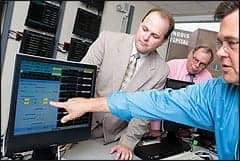
Lonnie R. Collins, AAS
In most facilities and health care organizations, the clinical engineering department has an established process and protocol for dealing with recalled medical devices. However, we, as clinical engineers, need to look beyond the boundaries of medical devices to food/nutrition and pharmaceutical recalls, where many health care organizations still face significant exposure and risk. With the ongoing budget battles, here is a strategy that positions your department to be in a leadership role when it comes to patient safety, risk avoidance, and cost savings.
Let’s assume for a moment that you have the absolute “best practice” in the nation when it comes to dealing with recalled medical devices. In the calendar year of 2009, you immediately dealt with all FDA Class 1 medical device recalls to keep your organization and patients safe. However, in doing so your efforts would only have resulted in a reduction of exposure to only 4.4%1 of all of the FDA Class 1 recalls that year! Looking beyond medical device recalls in calendar year 2009, 90.5% of all FDA Class 1 recalls were food related. Since hospitals prepare and serve food to patients, visitors, and staff, these recalls can provide a source of “low hanging fruit” for reducing exposure to recalls and risk. More than likely your existing medical device recall processes would be a significant improvement to what is being used in other service areas.
Let’s take our inquiry one step further—4% of all FDA Class 1 recalls in 2009 were from pharmaceutical companies, whose manufacturing practices and recall processes are generally held in high regard. However, that does not mean that the opportunity for improvement or consolidated efforts does not exist. You, as the clinical engineer, should review their practices. Can you learn from them? Can both departments improve through collaboration or consolidation? It is through cooperation with other departments that your knowledge, expertise, and engineering approach can truly add value. We provide a safer environment for our patients when recalls for medical devices, drugs, and food are managed in a systematic fashion. This is accomplished through a system that provides a central source for notification, documentation, tracking, and reporting on completion statistics.
An essential aspect of any new endeavor is to build in the metrics that show you are on the right track. The key metrics are response time, compliance, completion, and audits.
Response Time: The foundation is built upon criticality of the recall and response time lines. For example, Class 1 recalls should result in the recalled product being removed from use and sequestered so that it does not find its way back into use no later than the end of the next business day. For all other classes of recalls the response time can be 10 business days.
Compliance: Beyond notifying the affected departments of the recalled product is the need to get the recalled item out of use. Remove it from the shelf, cart, etc and sequester it so that it cannot migrate back into use. Our definition of compliant is “removed and sequestered all affected product.” Sequestering is the key. The worst-case scenario is for a recalled product that was not properly sequestered to be used in patient care. Even if it does not result in patient harm or a sentinel event, this should trigger a root cause analysis to prevent any further reoccurrence.
Completion: Once all recalled products have been sequestered, the return, exchange, or credit processes can commence. By building in a methodology for tracking the return, exchange, or credit for all recalled products, you can show the real dollar value of the recall process to senior leadership. Without a detailed process in place with checks and balances, these financial credits or product exchanges may get lost in the shuffle.
Audits: Monthly auditing of all recalls for compliance will help identify and eliminate obstacles to the recall process. A simple rank order report that lists those departments that are most compliant first and those that are least compliant last is very effective. No department manager wants to be the last caribou in the herd. Peer pressure works!
There are a variety of off-the-shelf solutions that can be purchased to track recalls and closing actions. The key to success in this area is to spend the time to accurately set up your users, notification process, and recall filters. We find that approximately 60% of what the FDA and subscriptions services post does not directly affect our institutions, which takes away from our energies to pursue critical recalls.
Let me encourage you to take the medical device blinders off. Look beyond the boundaries of clinical engineering to the other departments that can benefit from your work. This can provide you with an excellent opportunity to impact patient safety and collaborate with your patient safety team, pharmacy, and food service staff without significant rework or development of new processes. At the end of the day, safety in any form, fashion, or department is our job.
Lonnie R. Collins, AAS, is currently a program analyst in the product recall office at the Department of Veterans Affairs National Center for Patient Safety. For more information, contact .
Reference
- According to 2009 FDA Class 1 recall statistics.




